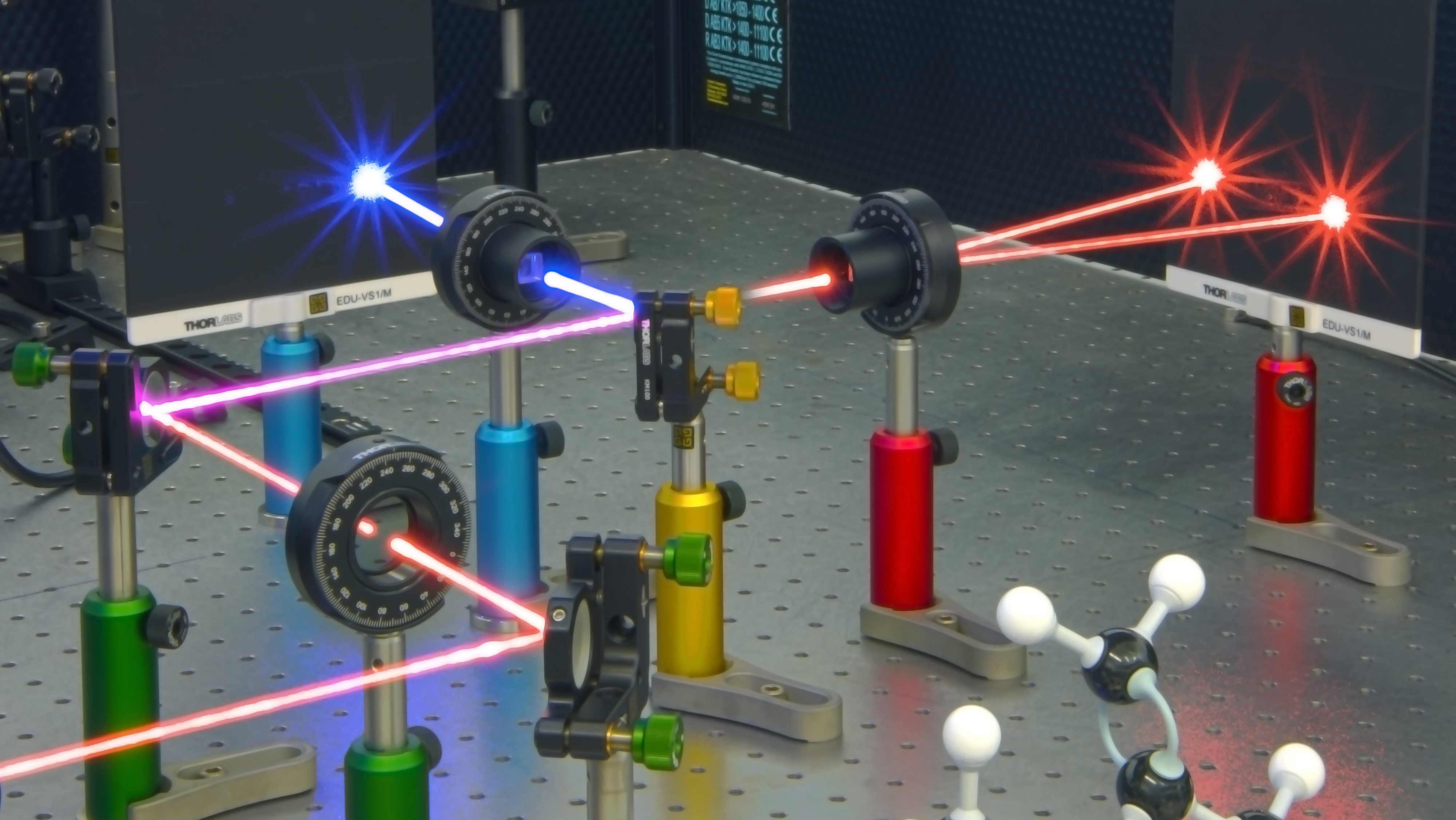Physicists at the University of Bath have devised a new and highly sensitive method to truly test the chirality of a material, eliminating the risk of false positives from competing effects.
Chiral molecules exist in different forms, even when they are made of the same atoms, those atoms can be arranged differently – twisting one way or another. This crucial difference can affect the properties of the molecules and has applications in fields such as telecommunications, nanorobotics, pharmaceuticals and industrial chemicals.
However, because of the nanoscopic nature of many of these molecules and materials it can be difficult for scientists to be certain they are working with chiral molecules of a particular twist (known as ‘handedness’). Some tests which are used can produce false positives, meaning scientists could be left working with the wrong samples.
The University of Bath team, working with colleagues at the Max Planck Institute for Intelligent Systems in Germany, demonstrated a method to separate the chirality of a substance from sources of false positives. In order to achieve this they used the way light interacts with artificial molecules (known as ‘meta-molecules’) that were made of tiny gold helices.
The team directed a powerful laser beam at samples of chiral meta-molecules, which caused it to change colour: from red to blue. Because the sample chirality imprints a twist on light, the blue light was also twisted: 45° left or right, depending on the sample handedness. Previously, false positives (such as anisotropy) have been known to affect chiral optical measurements.
Joel Collins, who conducted the experiments said: “Some other techniques can produce a similar effect but without this being due to the chirality which can be misleading. By being able to rotate the sample and retain the optical effects we have a true test of chirality, and you can be sure what you’re seeing is due to chirality and not some other property.”
Dr Ventsislav Valev who led the research said: “Meta-molecules are scientifically very exciting. Our demonstration of this effect, free from anisotropy contributions, is a first in the research field. Plus, we were astounded by how large it was. A 45° twist usually requires travelling through 5 cm of concentrated sugar syrup. Our material is half a million times thinner.”
The research is published in the journal ACS Nano.
The Research was funded by The Royal Society, Science and Technologies Facilities Council (STFC) and the Engineering and Physical Sciences Research Council (EPSRC).

